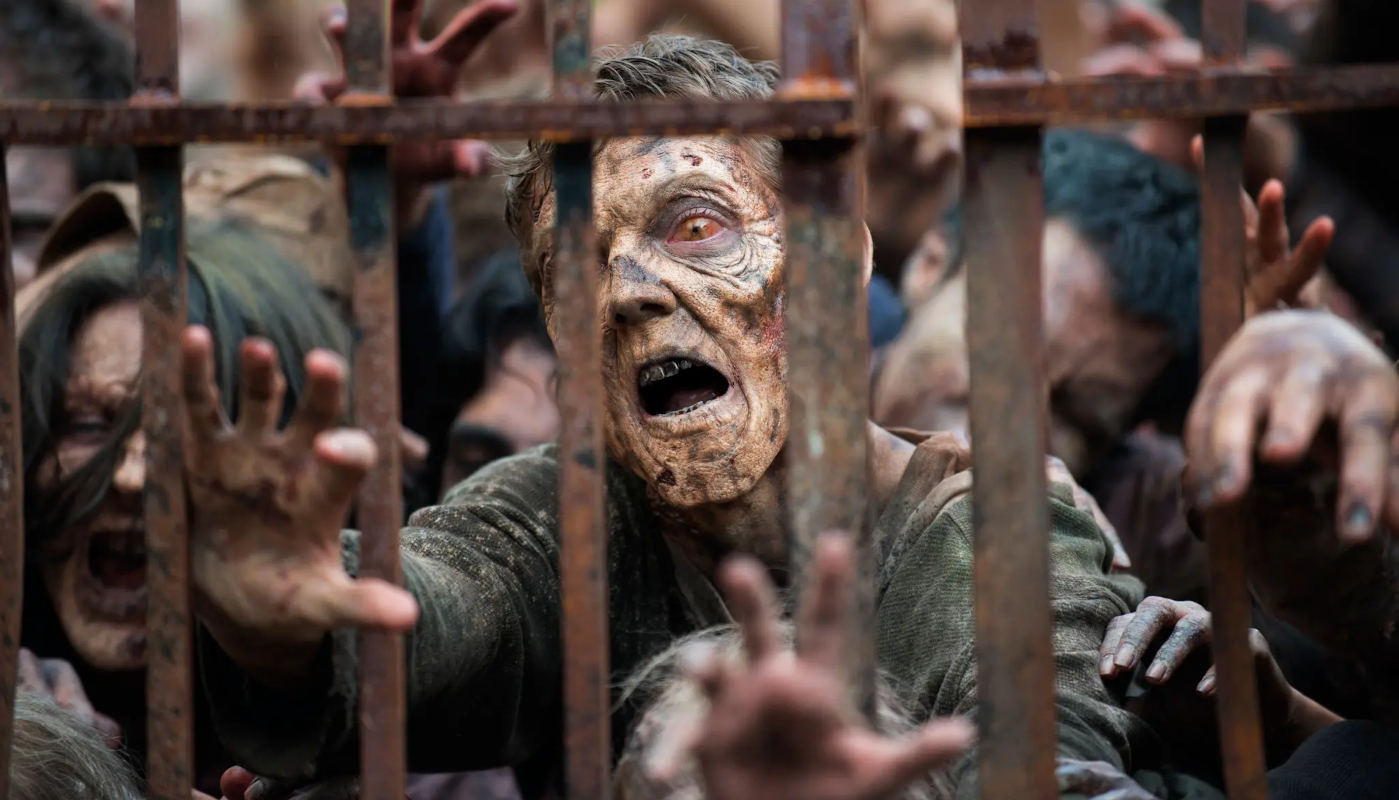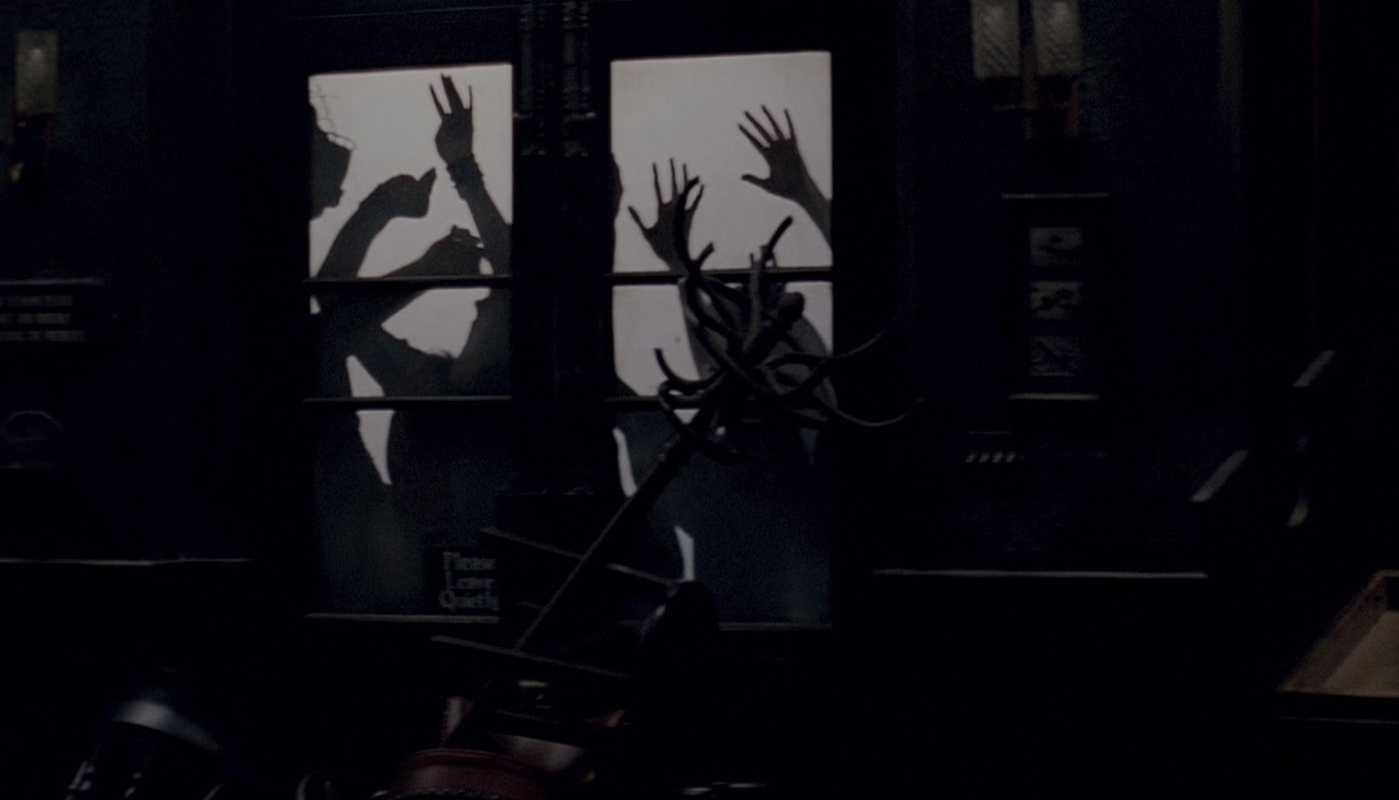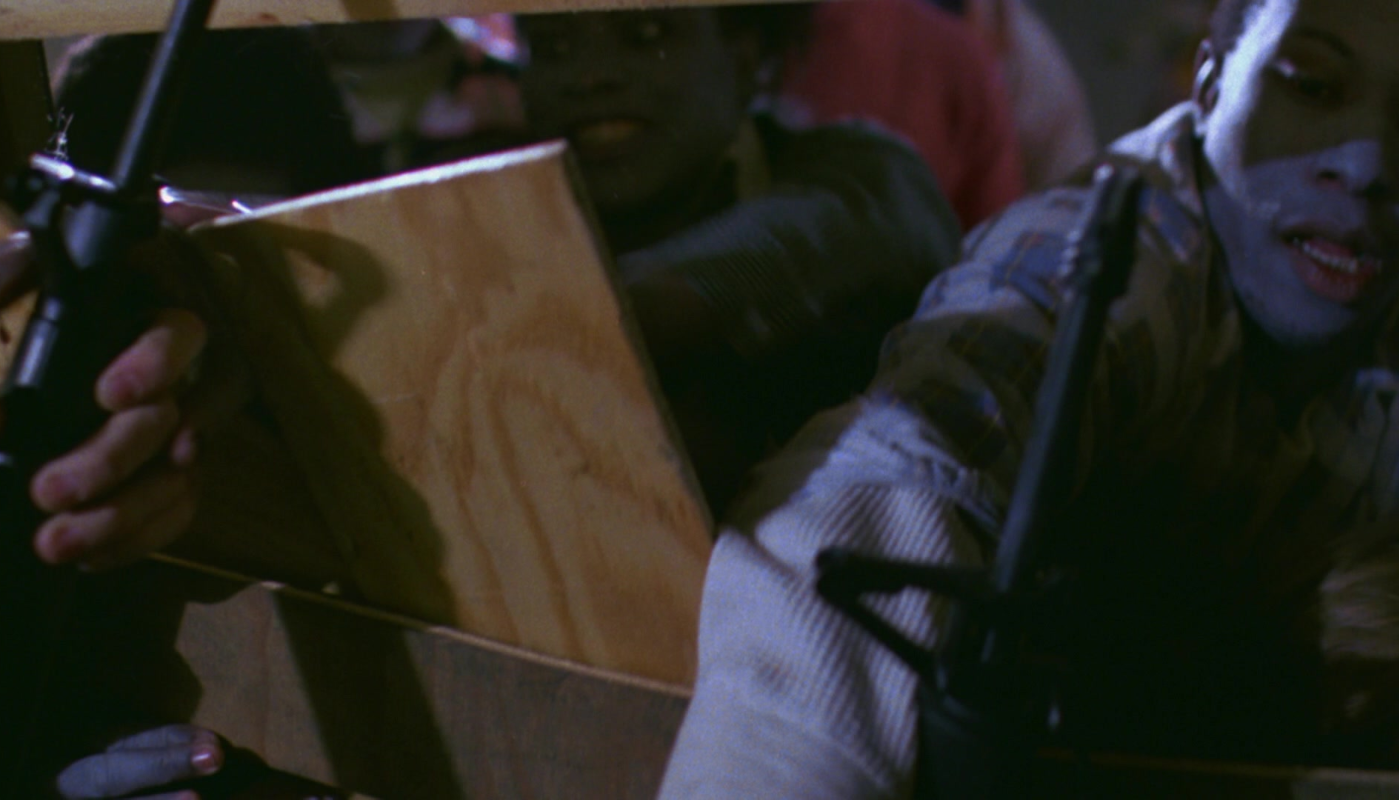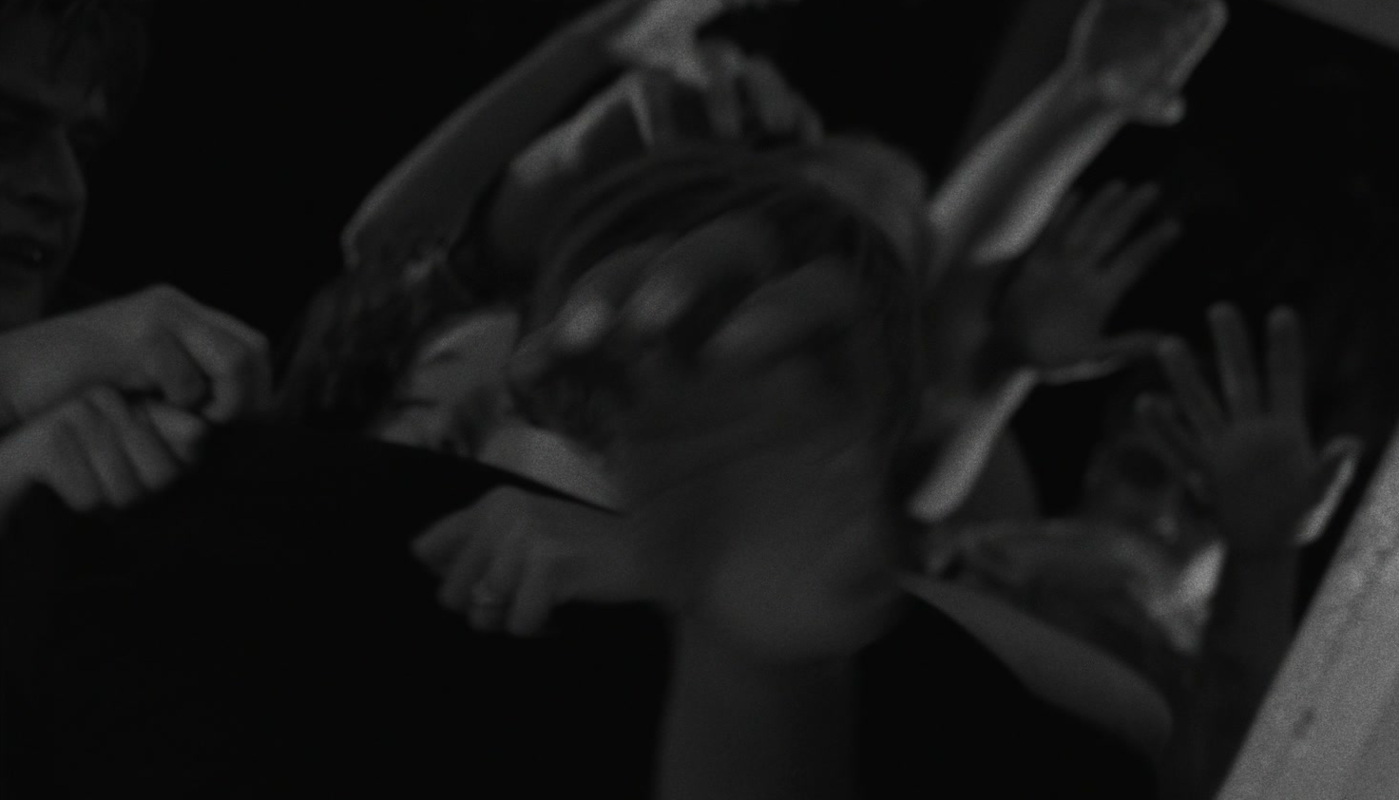The Speed of the Dead
Spoiler Warning
This article will discuss endings and major narrative elements for the following movies:
NIGHT OF THE LIVING DEAD (1968)
DAWN OF THE DEAD (1978)
28 DAYS LATER (2002)
DAWN OF THE DEAD (2004)
SHAUN OF THE DEAD (2004)
In the late 2000s, tower defense games were booming, and George Fan was working on his own.
The genre has two main components: waves of enemies that steadily advance on you, and stationary defenders that you put in their path. It’s important that the enemies are particularly slow, because the player needs enough time to build their defenses amid the onslaught.
Fan knew early on that he wanted his stationary defenders to be plants. Initially, he was just going to reuse the fish-eating aliens from his last game as enemies in his new one, but they didn’t quite fit in the new genre: Why would aliens move so slowly?
In 2009, he released his game: PLANTS VS. ZOMBIES.
As Fan explained: “I needed an enemy that people would just look at and immediately realize, ‘That’s a slow enemy.’ […] That’s why it’s zombies.”
He’s not wrong, but the timing is a little funny alongside another trend from the 2000s: the sudden and widespread popularity of fast zombies.
There had been “fast zombies” before then, but it was the huge success of films like 28 DAYS LATER and DAWN OF THE DEAD in the early 2000s that really injected adrenaline into zombies’ public image. For nearly 40 years, zombies were slow and shambling, and then a handful of movies make waves at the box office and suddenly the undead are running down their prey like a pack of wolves.
“Fast zombies versus slow zombies” is one of those fandom schisms - like “does the Balrog have wings?” - that tends to have old-timers and purists on one side (no wings, slow zombies), and newcomers and casual fans on the other side (yes wings, fast zombies).
And as is often the case with these types of fandom schisms, the side that’s associated with more recent popular media (and the new fans it brings in) is taken less seriously, interrogated less thoroughly, and treated more like a shallow move toward mass-market appeal.
Neither side is “right” (zombies aren’t real) - but as a long-time zombie fan, I’m not going to pretend to be neutral here: I like fast zombies.
More importantly, though, I think we’re missing out by not digging into them more. Monsters always reflect the culture that makes them. What insights do fast zombies hold?
But before we can answer why the footspeed of zombies matters, we have to ask a more basic question: Why were zombies slow to begin with?
George Romero directed and co-wrote the first movie to depict modern zombies (i.e. a mindless mass of undead cannibals), 1968’s NIGHT OF THE LIVING DEAD, and kept making new zombie movies for the next 40 years - putting out a total of six “_____ of the Dead” films in that time. No single person invents an entire genre - he didn’t even make that first movie by himself, after all - but Romero has been one of the vanguards of zombie cinema since the beginning.
Now, the first thing you need to understand about Romero’s zombies is that they aren’t a plague - they’re a revolution.
These days, zombiism is most commonly depicted as being caused by an infectious pathogen (as shown in RESIDENT EVIL, LEFT 4 DEAD, ZOMBIELAND, WORLD WAR Z, THE LAST OF US…) - but in Romero’s movies, it worked differently: everyone who died, for any reason, came back as a zombie, no infection needed.
Romero’s “Dead” movies are all apocalyptic or post-apocalyptic not simply because the zombies eat a lot of people, but because their existence at all means that the world we know is gone for good. You can’t cure death, so there will always be more zombies.
Zombies are inexorable.
That’s why the most enduring and archetypal depiction of zombies is the throngs of bodies pressed up against the barrier of a sanctuary, with waves of hands reaching through walls and windows. It doesn’t matter how smart or strong or fast they are; they are going to get inside eventually.
And if you’re building your monster out from your message, you can see why making zombies slow and somewhat feeble actually serves their core metaphor well.
It’s not that killing an individual zombie is difficult; it’s that it is pointless. Making it seem like they can be easily stopped sets up the lesson that they ultimately cannot. There will always be more zombies.
At the beginning of the original 1978 DAWN OF THE DEAD, also written & directed by Romero, the U.S. National Guard is trying to contain the zombie threat by mandating that everyone surrender their dead to them so they can be permanently disposed of. A squad raids a Latino community that wants to manage their own dead, and after they gun their way in and take over the building, an elderly priest addresses the armed officers:
“You are stronger than us. But soon, I think...they be stronger than you.”
He is, of course, correct.
But no metaphor perfectly communicates itself.
Despite the intended messages of Romero’s films, some amount of people are going to see his stumbling, groaning, blue-facepaint-wearing zombies and think “well, this little piggy would simply build their house out of bricks, and the big bad zombies wouldn’t be able to get in.”
Max Brooks’ 2003 book THE ZOMBIE SURVIVAL GUIDE is wholly dedicated to this perspective, and even 2004’s loving genre tribute SHAUN OF THE DEAD (which Romero loved) ends with the lead rendering his zombified friend harmless enough through some simple restraints that they can safely play video games together.
Zombies had also been steadily associated with comedy for decades - partly from actual horror-comedies like RETURN OF THE LIVING DEAD and BRAINDEAD, and partly from zombies’ strong affinity for schlocky B-movies (they’re cheap monsters to make). This left zombies with a reputation as a kinda silly monster, consigned to cult hits at best.
When zombies finally broke through that box-office glass ceiling in the 2000s, it was explosive - not just financially, but sensorially.
The new zombies weren’t just faster, but also stronger, louder, more numerous, and meaner. In 28 DAYS LATER, the cries of the infected are distortions of people screaming “I hate you!”. In LEFT 4 DEAD, the signature sound of the undead isn’t low moaning, but vicious gurgling shrieks and roars as they tear a path towards you, scrabbling and leaning into their turns.
In every way, these zombies were more intense than before.
It’s tempting to assume that the people behind these new big-budget hits didn’t really “get” the true essence of the old source material, especially when Romero himself vocally didn’t buy into fast zombies - but the forerunners of the new zombies were actually big fans of Romero’s films trying to recapture what they loved about them.
The 2004 remake of DAWN OF THE DEAD was a passion project for both writer James Gunn and director Zack Snyder - and their updates were meant to emphasize that same core zombie trait of inevitability.
They were just trying to work past the fact that people didn’t really take slow zombies seriously.
“[Audiences] have to believe the zombie threat is real - that if you confront a zombie one-on-one, you may be able to escape, but against more than one, you’d better run. There’s never really a chance of winning...”
And it works - the zombies of the new DAWN really do feel like an overwhelming force. With a horde bearing down on you, there’s no way you can shoot enough of them in the few seconds it’ll take them to reach out.
At the end of the remake, some of our heroes get on a boat to find an island where there are no zombies - but their deaths are revealed in the film’s ending credits, as if to say “did you really think there was any escaping this fate?”
In a weird way, the remake also shares something else with the original: a desire to present what Romero called “all-American crisis footage”.
Visually, zombies are just human bodies, and so footage of them being shot at by militias and soldiers is going to inherit certain connotations. For Romero, this imagery was intended to evoke news reels of race riots going on in the American south during the 60s.
For Snyder, however, this meant tapping into the post-9/11 panic of a reactionary America, one that was fresh into a new war in Iraq. DAWN’s opening title sequence portrays the zombie apocalypse through a series of news reports, mixing footage of the dead rising with crowds of Muslims praying, police firing into groups of either protestors or refugees, and American journalists in the Middle East.
In just two short minutes, it recreates much of the racist and pro-war mediascape of the U.S. in the early 2000s - suggesting that if you just turned the dial up on what Americans were seeing on the news daily, you’d get the Biblical end of days.
So, where do fast zombies actually diverge from slow zombies?
I don’t think it’s in their seriousness, or in their efficacy as metaphors for an inescapable apocalypse.
On the one hand, running helped make DAWN OF THE DEAD’s zombies seem scarier to a generation who grew up thinking of them as a joke.
On the other hand, ZOMBIELAND is an outright comedy that opens with a ZOMBIE SURVIVAL GUIDE-style joke about how surviving fast zombies just requires getting a bit more exercise to make sure you can still outrun them. And ZOMBIELAND made just as much at the box office as DAWN OF THE DEAD.
The bigger difference in how most fast zombies are characterized compared to their slower counterparts - at least, those in Romero’s films - is their humanity.
Because Romero’s zombies were shambling and harmless-looking (and didn’t have much make-up beyond some face paint), they looked like normal people. Scenes where they are gunned down by cops in riot gear or cheering rural militiamen were meant to align sympathies against the gunners. These were not films about how cool it is to gun down zombies by the boatload.
After all, the last survivor of the original NIGHT OF THE LIVING DEAD is gunned down by a roaming posse that doesn’t bother to check if he’s a zombie. And DIARY OF THE DEAD prominently features “a couple of hometown Joes” shooting at restrained zombies for fun, while the heroine wonders if people are worth saving.
In Romero’s films, zombies were always the threat, but never the villains. (Occasionally, they were even outright heroes.)
By contrast, the sprinting, feral, roaring undead we see in fast zombie movies are much more monstrous in their portrayal. It’s hard to have your protagonists ponder their similarities with the undead when they can’t even safely make eye contact with them before needing to run for their lives.
This epitome of this tendency comes in WORLD WAR Z, which zooms out so far in its attempt to capture the scale of the zombie apocalypse that it loses all intimacy. With all its wide shots showing indestructible CGI hordes flipping over vehicles just by crashing into them like a tide of angry limbs, it turns its zombies into an almost abstract phenomenon - as non-human as the meteorological disasters of 2012 or THE DAY AFTER TOMORROW.
But there’s more than one way to sympathize with a monster.
If the zombies aren’t enough like people, you can make your people more like zombies. Which is, in fact, how it went down in the very first movie to kick off the fast zombie trend: 2002’s 28 DAYS LATER.
The fast zombies of 28 DAYS LATER are ultimately just exceptionally violent people. They’re not undead, they’re not cannibals - they just want to tear apart any uninfected person they see. And, of course, they can turn you into one of them.
For most of the movie, they’re incomprehensible monsters.
But in the third act, our heroes are captured by a military enclave that wants to rebuild society through violently-enforced sexual slavery. Outgunned and outmuscled, one of our heroes turns to desperate and vicious guerilla tactics - ending up acting like, and even working alongside, the raging infected in order to overcome his captors.
His rampage is so brutal that his friends think he actually is infected, and nearly kill him. But, in what feels like a direct response to the bleak ending of NIGHT OF THE LIVING DEAD, they hesitate - just long enough to look him in the eyes, and see his humanity.
It’s an ending that calls for both a rejection of violence, and a sympathetic understanding of it.
After seeing our hero lean into monstrosity as a way to save his friends from an inhumane social order, the revolutionary rage that ended the world is reframed - not as some accidental horrible thing that befell us, but as a predictable response to the oppressive violence of our pre-apocalyptic society.
Not for nothing, 28 DAYS LATER - just like DAWN OF THE DEAD - opens with media footage of social unrest, and police and military brutality. It’s a movie about how and why we become zombies.
And I think that reveals a distinction between types of zombie stories that runs much deeper than their zombies’ footspeed, or whether they’re technically undead, or any other purist sticking point: how does humanity relate to zombies?
Through all the different flavors of zombiism we got out of the zombie renaissance of the 2000s, I tend to see them play one of two well-established roles: where zombies serve as a familiar punching bag (as in SHAUN OF THE DEAD and 2004’s DAWN OF THE DEAD), or as a dark reflection upon us (as in 28 DAYS LATER and 1978’s DAWN OF THE DEAD).
And that’s what I’m most interested in.
Do the zombies represent a threat that must be cured, or a transformation of our existing society? Are they bullet sponges, or mirrors?
Is the story about overcoming the zombies, or becoming them?

















